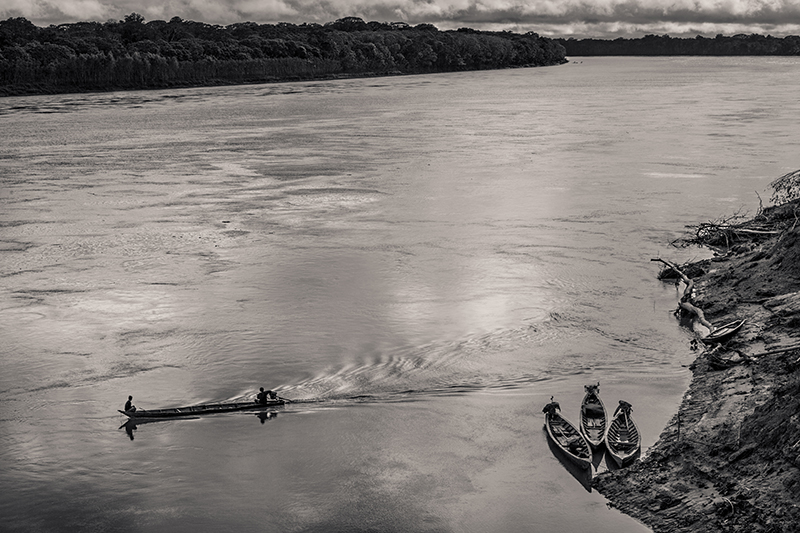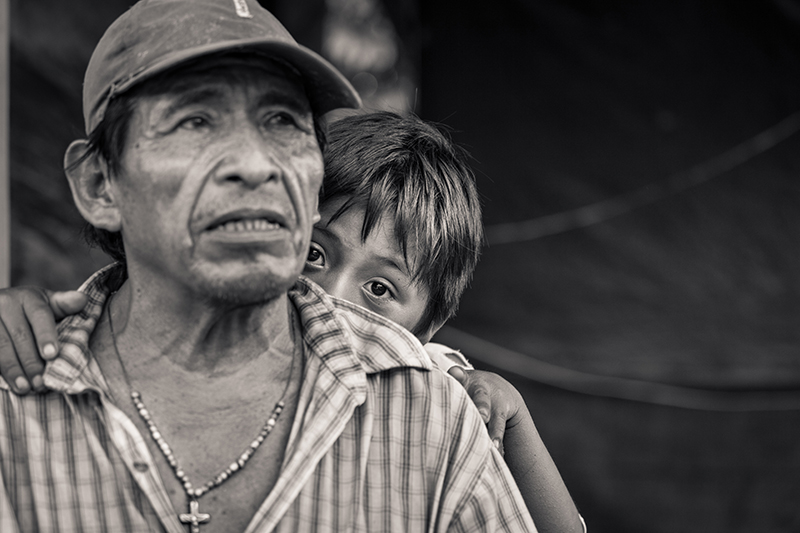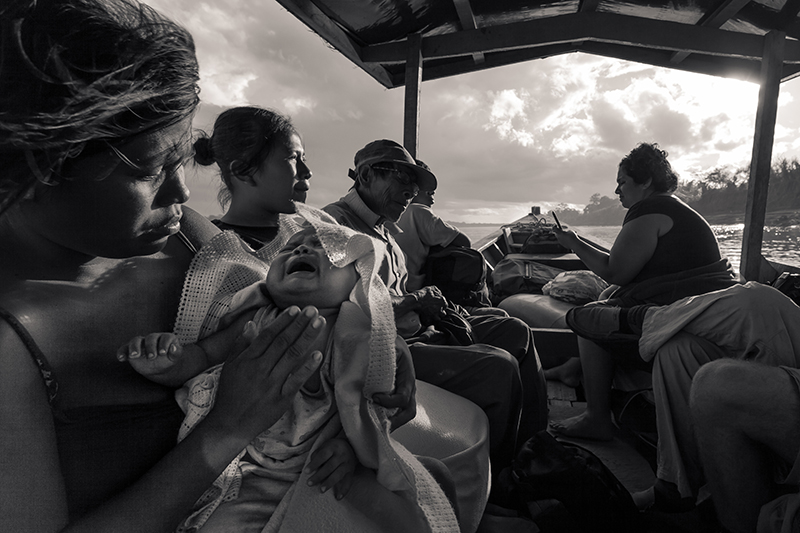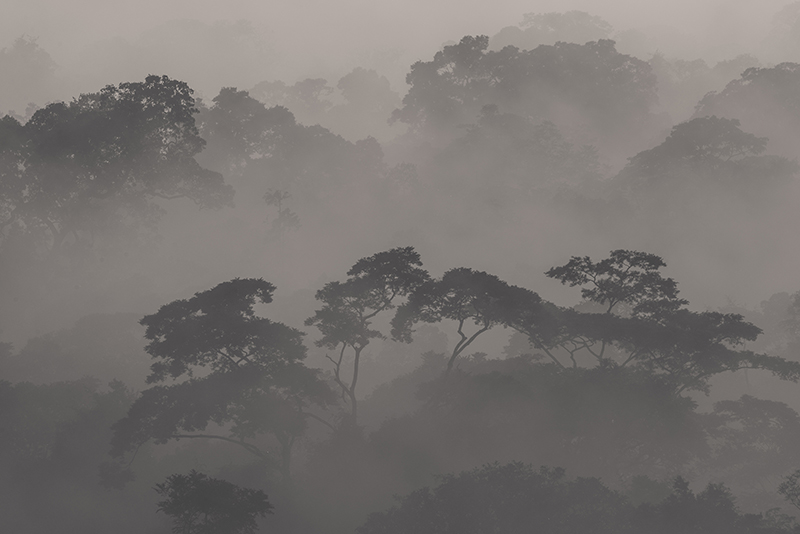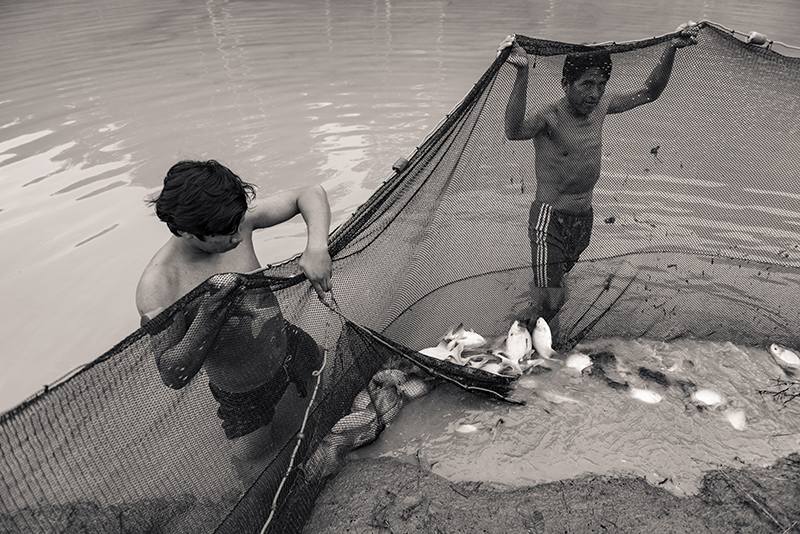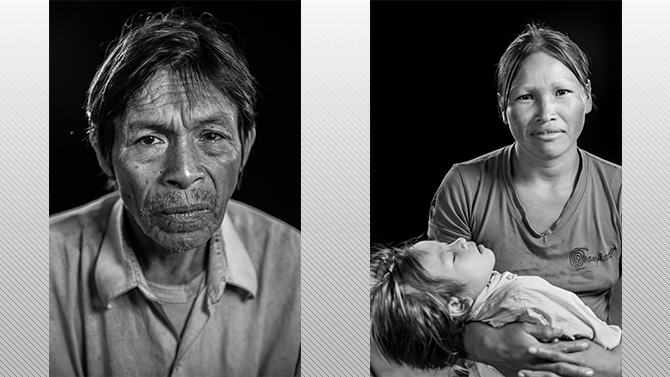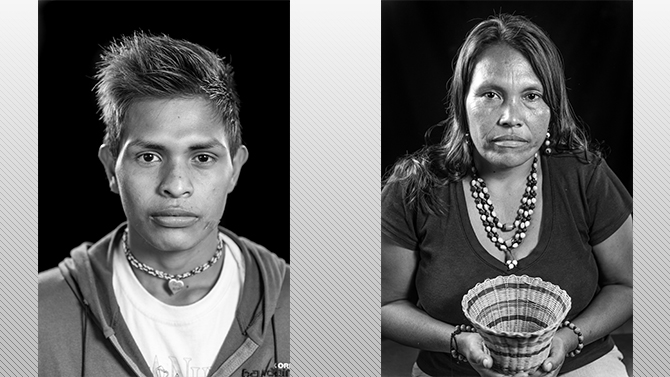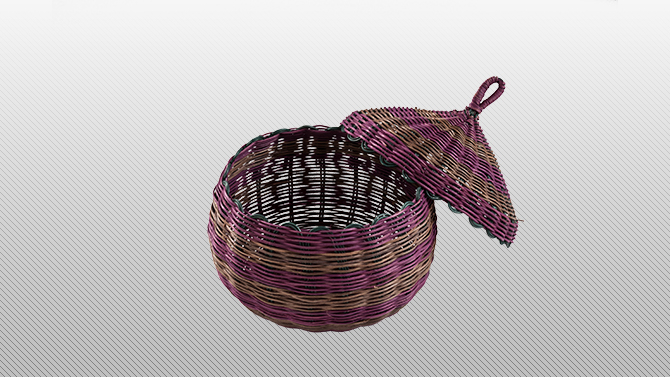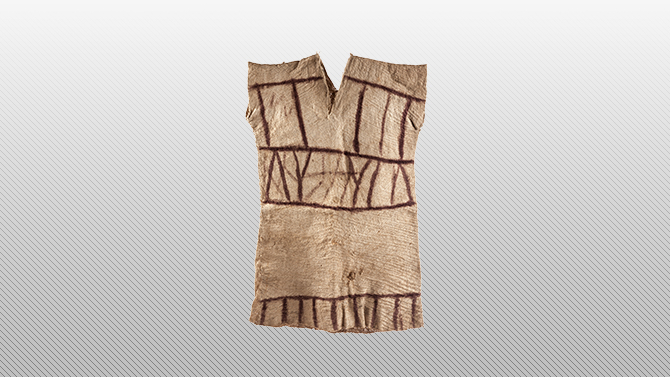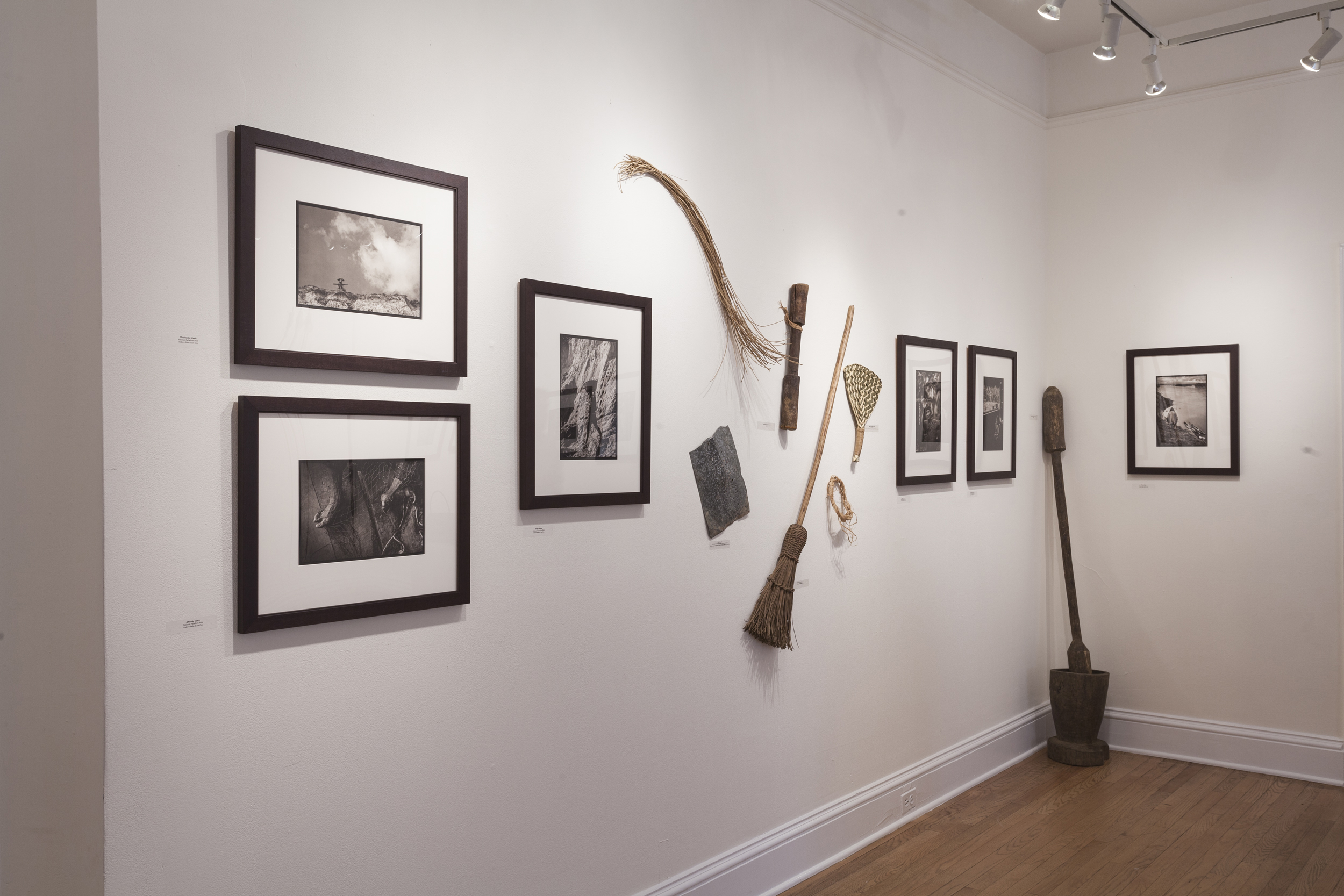

Connected by a thread
Photos by Jon Cox and Andrew Bale July 10, 2017
Peruvian embassy hosts exhibit featuring indigenous culture
An exhibition highlighting one of the last indigenous cultures of the Peruvian Amazon and featuring field research, photography, art conservation and curatorial work by University of Delaware faculty, students and alumni will open this week in Washington, D.C.
The Ese’Eja People of the Amazon: Connected by a Thread will be on view at the Embassy of Peru until Sept. 15, and will then travel to numerous museums throughout the U.S. An opening reception and book signing will be held at the embassy on Thursday, July 13.
A parallel exhibit created by the same team will be on display July 27-30 at the Smithsonian’s National Museum of the American Indian, where it will be part of the Kaypi Perú (“This Is Peru”) festival celebrating the nation’s cultural heritage. More than 30,000 visitors usually attend the free, annual festival.
Also connected to the exhibit, a new documentary book, Ancestral Lands of the Ese’Eja: The True People, has been published by the Amazon Center for Environmental Education and Research (ACEER). All proceeds from the sale of the book will go to ACEER’s Community Development Fund in support of Ese’Eja and other indigenous development projects and conservation education in the Peruvian Amazon.
The team that created the exhibition was led by Jon Cox, assistant professor of art and design; Vicki Cassman, associate professor of art conservation; Monica Dominguez Torres, associate professor of art history, all at UD; and Andrew Bale, lecturer in art and art history at Dickinson College. Bale, who earned his master of fine arts degree at UD in 2005, and Cox are photographers whose work is showcased in the exhibit and the book.
Objects displayed in the exhibit include baskets, bark cloth, carved wooden bows, arrows with elaborate feather arrangements on their shafts, a necklace of wild-pig teeth and various items dyed with berries and other natural materials.
The Ese’Eja, who now live in three villages in Peru, are an indigenous hunting, gathering and fishing people. Their numbers have plummeted in recent years, and their traditional culture is threatened by development, industry and restricted access to their ancestral lands.
“One of the goals of having the exhibition and the book was for the Ese’Eja to have a voice in the policies that directly affect them,” Cox said. “My goal was to facilitate them telling their story with the hope that projects like this one will start a conversation.”
Exhibit inspired by 2014 expedition
The exhibit of artifacts and photographs, many previously on view in UD’s Old College Gallery, grew out of a 2014 “cultural mapping” project in Peru led by Cox and Rainforest Expeditions.
In that project, UD faculty members, four undergraduate students and two alumni, including Bale, spent three weeks in Ese’Eja communities. The interdisciplinary group documented the everyday lives of the people through photos, video, oral histories and maps created from GPS coordinates and the recollections of older Ese’Eja who remember the good hunting and fishing locations and sacred places.
The mapping project resulted in a video titled “The Ese’Eja: From a Cotton Thread in the Sky to Protectors of the Amazon.” The title refers to the traditional belief that the Ese’Eja traveled down to Earth on a cotton thread.
The video, hosted on the National Geographic website, can be viewed via a link on the overall project website, “The Ancestral Lands of the Ese’Eja — The True People,” at www.eseeja.org. The cultural mapping project was supported in part by National Geographic’s Genographic Legacy Fund, and in 2015 Cox was named a “National Geographic Explorer.”
For the students who took part, the expedition was a unique learning experience that encompassed research in anthropology, ethnobotany and education, as well as hands-on photography, videography and mapping skills.
For Brian Griffiths, who graduated in 2016 with degrees in environmental engineering and plant science, the project led him to a new passion and altered career plans.
“That trip was really my first research experience in the field, which was huge for me because now that’s what I do,” said Griffiths, a doctoral student in environmental science and policy at George Mason University who continues a particular interest in Peru.
“I’m studying environmental science in terms of people—their impact on the environment and how environmental change affects them. My focus is always on indigenous people.”
Another student from the cultural mapping expedition, Chelsea Rozanski, is completing her Peace Corps service in Panama. A 2014 graduate in anthropology and women and gender studies, Rozanski said the experience ”profoundly influenced” her plans to study and teach cultural anthropology.
“The opportunity of being a part of this interdisciplinary collaborative effort was the richest personal and educational experience during my time at UD,” she said in an email from Panama. “I grew as an aspiring anthropologist, world traveler and advocate for environmental and indigenous rights.”
Photographs hold deeper meaning
When Cox and Bale were deciding how to select and display photographs for the exhibition and book, they wanted to do more than show what the Ese’Eja people and communities look like.
They came up with the idea of using photographic processes that would symbolize some of the challenges the Ese’Eja face from outside influences.
Portraits of community members were created using mercury-developed gold-gilded daguerreotypes, a labor- and time-intensive technique that was first developed in 1839 to make the earliest photographic images.
The use of mercury and gold was important, Cox said, because illegal mining of gold in the Peruvian Amazon releases some 38 tons of mercury a year, threatening the Ese’Eja’s health and ecosystem, as well as their way of life.
In addition, because daguerreotypes have a kind of mirrored surface, the viewer sees his or her own reflection as well as the image of the person who was photographed.
“You see living people in the image, but you also see yourself, because we’re all [as consumers] part of the problem,” Cox said.
Other photographs show sacred sites and ceremonies in platinum-palladium prints, a process developed in 1873. The prints are made on Japanese Kozo paper, symbolizing the influence of Japanese refugees who settled on Ese’Eja ancestral lands after World War II.
Program support
Support for the project has come from the Amazon Center for Environmental Education and Research, Dickinson College, the Greater Philadelphia Latin American Studies Consortium, National Geographic’s Geographic Legacy Fund, Hahnemuhle, Notchcode Creative and Rainforest Expeditions in Peru.
University of Delaware units supporting the work include the Department of Anthropology, the Department of Art and Design, a General University Research Grant, the Institute for Global Studies, the College of Arts and Sciences’ Interdisciplinary Humanities Research Center, the Office of Undergraduate Research and Experiential Learning, and the School of Education.
Contact Us
Have a UDaily story idea?
Contact us at ocm@udel.edu
Members of the press
Contact us at 302-831-NEWS or visit the Media Relations website

